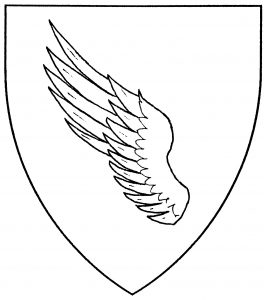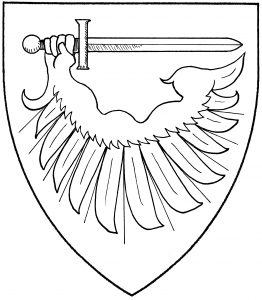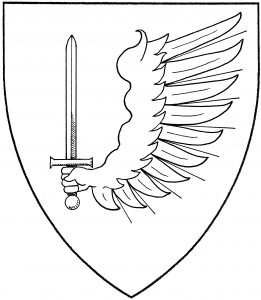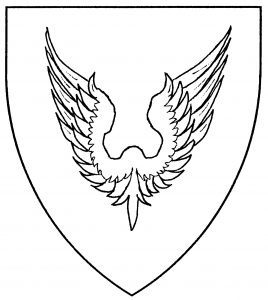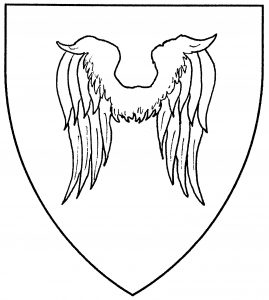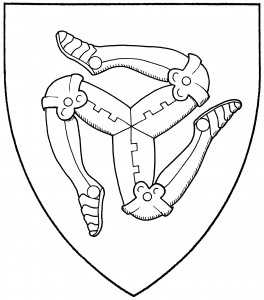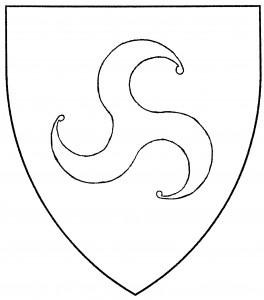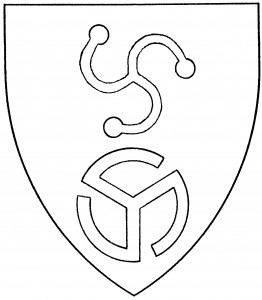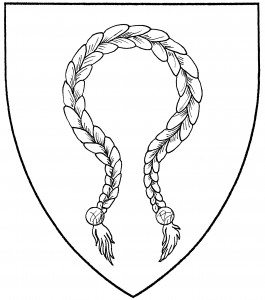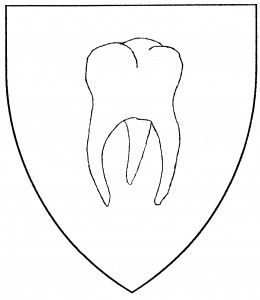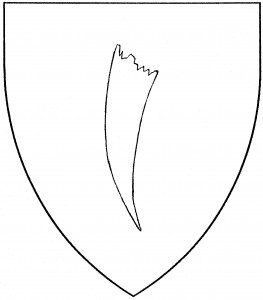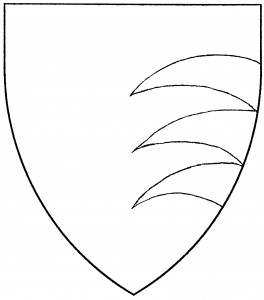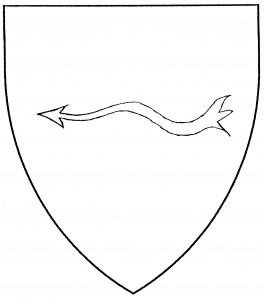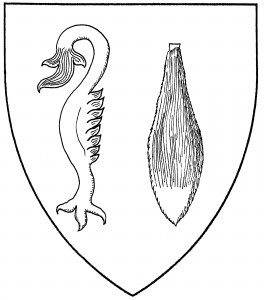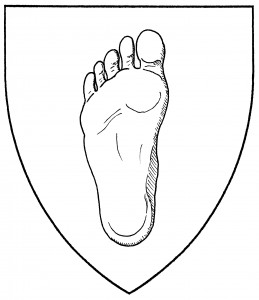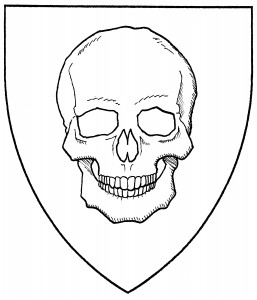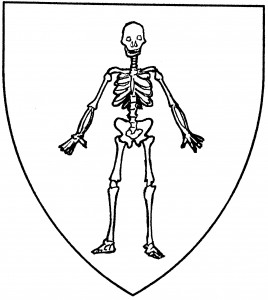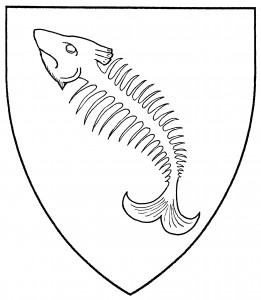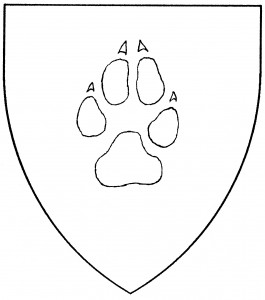.
A wing may be used as a single charge; this usage dates from c.1295, in the English arms of Peek [ANA2 556]. Both dexter wings and sinister wings are found in period armory. The mundane default has varied between countries and times; the Society default is the dexter wing.
.
. Wings are also found in pairs, with a dexter and a sinister wing, frequently conjoined. (The difference is subtly blazoned: two separate, dexter wings would be blazoned “two wings”, while a dexter wing and a sinister wing would be “a pair of wings”.) This usage dates from c.1285, in the arms of Derneford [ANA2 555].
A pair of wings may be conjoined: this was considered artist’s license, as the same arms could be drawn either with the wings conjoined or separate. A pair of wings displayed and conjoined may also be blazoned a “vol”, the French term for the motif; this is seen in the arms of von Hohenfels, 1606 [Siebmacher 140]. If the conjoined wings are displayed with tips inverted, they are known as “wings conjoined in lure”, as in the arms of Jane Seymour, d.1537 [Woodcock & Robinson pl.19].
Finally, of Society-unique charges, we find the “set of seraph’s wings”: six wings conjoined, arranged as if attached to a seraph.
Bat’s wings are much less common in medieval armory than bird’s wings: Your Author knows but a single example, the badge of Daubeney, Earl of Bridgewater, d.1548 [HB 81]. For related charges, see lure.
The Baron of the Angels bears as a badge: A set of seraph’s wings Or.
The College of Cathanar bears: Vert, a sinister hawk’s wing argent and in canton a laurel wreath Or.
Matill of Windkeep bears: Purpure, three sinister wings argent.
Brioc Morcannuc bears: Azure, a vol Or.
Herman Mandel bears: Barry and per pale sable and Or, a wing terminating in a hand maintaining a sword all within a bordure gules.
Etienne Michel de Calais bears: Argent, in pale three pairs of bat-wings conjoined gules.
Gustavus von Goslar bears: Or, an eagle’s dexter wing terminating in an eagle’s head sinister facing sable, a chief rayonny gules.
